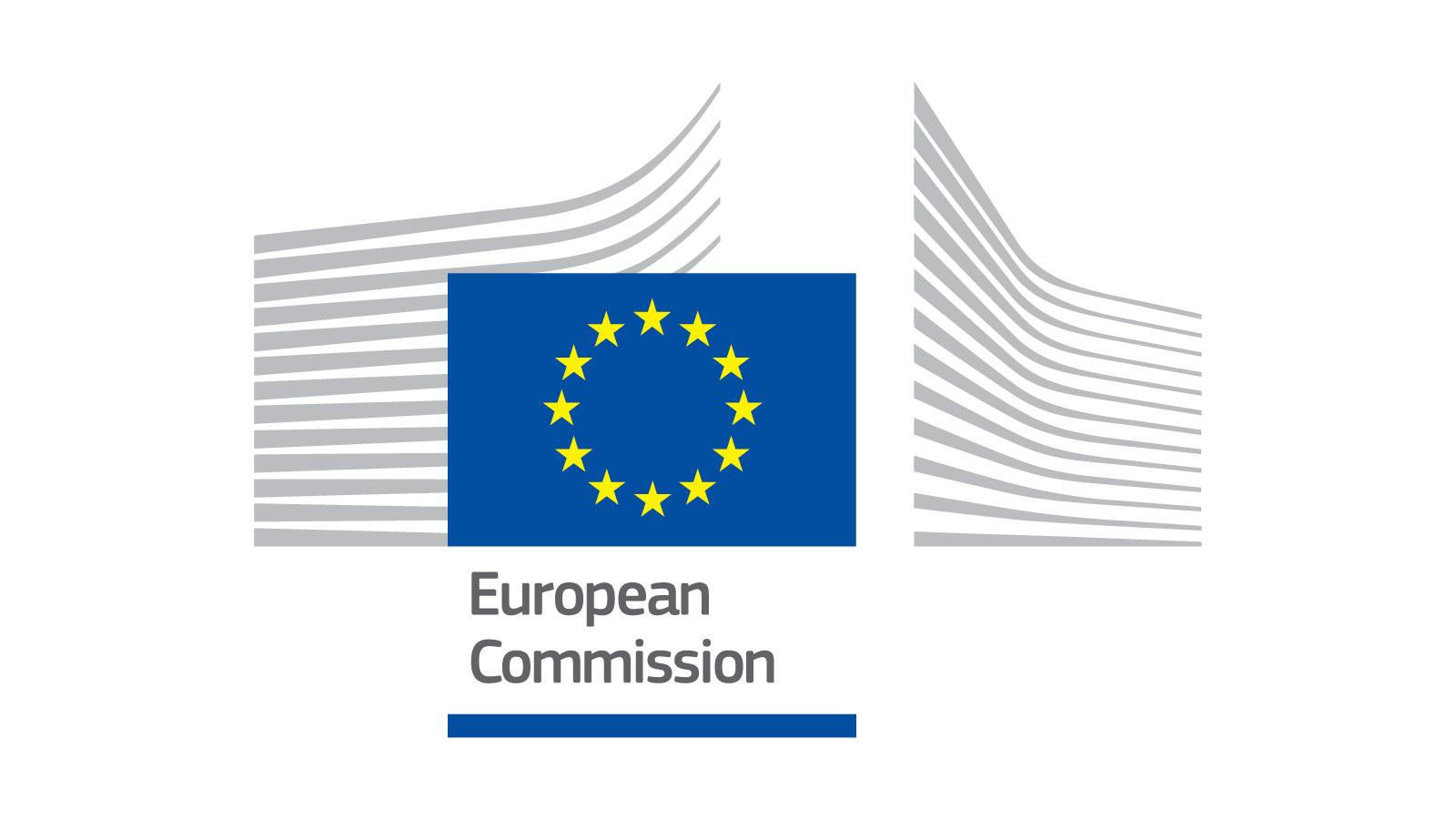- Questions and answers on the Communication on Connecting Europe through High-Speed Rail European Commission
- Clean aviation, maritime should see €100bn investments by 2035, EU roadmap says MLex
- EU Pushes Rail, Aviation, Maritime in Green Strategy Mirage News
- Certainty, predictability, and a few EU U-turns: at Connact, the recipes for the future of transport Eunews
- Momentum and uncertainty, EU aviation and maritime transport faces decarbonisation challenge Eunews
Category: 3. Business
-

Questions and answers on the Communication on Connecting Europe through High-Speed Rail – European Commission
-
Corona Cero Brings Golden Moments to the Mountains of Milano Cortina 2026
As the
100-day countdown to the Olympic Winter Games continues, and in a year the global
Corona brand is celebrating its 100th anniversary, Corona Cero is officially
set to bring golden moments to the slopes of Milano Cortina 2026. As the first no-alcohol beer sponsor of the Winter Olympics, our brand
is revving up its “For Every Golden Moment” global platform to invite consumers
to celebrate every golden moment any time, any season.What began at the Olympic Games Paris 2024, Corona Cero’s Olympics partnership reinforces that beer and sports are better
together by offering consumers more choices for any occasion. Corona Cero’s role
reflects AB InBev and the International Olympic Committee’s (IOC) shared commitment
to responsible consumption, connecting fans and athletes of a legal drinking age
to a fresh perspective on relaxation and celebration.“Together with the IOC, we are creating unforgettable
experiences for consumers and athletes, where beer and sport come together in celebration
of the Winter Olympics,” said Richard Oppy, AB InBev Global President, Premium Brands.
“Corona Cero’s momentum since its Paris debut reflects the growing global demand
for balanced choices, and we are proud to bring messages of connection, moderation,
and celebration to the Games.”A Global Platform
for All Golden Moments and SeasonsWhile the brand’s heritage has long embodied the spirit of
the beach, Corona Cero reimagines its “For Every Golden Moment” platform for the
Winter Olympics, celebrating both Olympic triumphs and the golden moments in everyday
life that transcend all seasons. Whether breaking world records, connecting with
friends, or enjoying a sunset on a snowy mountain, “For Every Golden Moment” reminds
people that these meaningful moments can happen anytime or anywhere.To kick off the platform, citywide takeovers have launched
in key markets, featuring dynamic out-of-home and digital media to celebrate 100
days until the Olympic Winter Games. The “For Every Golden Moment” platform will
then scale across more than 25 select markets worldwide, including brand activations,
product sampling with Corona Cero’s iconic lime ritual, athlete engagement, experiential
and trade programs, and the debut of Olympic-themed bottles.“The Olympic Games bring people together to celebrate humanity’s
greatest achievements, and we are pleased to have Corona Cero continue as part of
that celebration,” said Anne-Sophie Voumard, Managing Director, Television and Marketing Services
from the IOC. “Corona Cero’s
golden moments began a tradition for fans of a legal drinking age worldwide, and
we are excited to see it come to life even further this winter.”The platform is anchored by an anthem film,
titled “For Every Golden Moment,” created in partnership with a curated global team
at creative agency, Grey. The hero film features speedskater Irene Schouten (Netherlands),
alongside snowboarders Mark McMorris (Canada), Billy Morgan (Great Britain), and
Ayumu Hirano (Japan), among others. The film combines iconic Olympic footage and
everyday imagery, drawing parallels with real-life events, both big and small, to
show that golden moments can be experienced anywhere in the world.Continue Reading
-

Money Talks: Almost two thirds of mid-retirees have not had essential conversations about finances
- Almost two thirds (64%) of mid-retirees have not had essential conversations with family or friends about managing financial affairs should they become unable to do so independently.
- Only a third (36%) of mid-retirees know all the details of their partner’s pension.
- More than four in five (84%) mid-retirees in a couple have not checked to see if their partner has nominated them as a beneficiary for their pension.
- 81% of mid-retirees said they did not have a lasting power of attorney (LPA)
Research by Aviva, a leading pension provider, and Age UK, the UK’s expert voice on ageing, has found that mid-retirees are navigating retirement without the financial support or guidance they may need as they get older[1]. The report by Aviva and Age UK (published May 2025), Retirement Reality: Managing Money in Mid-Retirement, highlights the challenges faced by mid-retirees navigating the retirement landscape. The research surveyed 1,000 mid-retirees (aged 65-75) who have a private pension, are on a moderate retirement income, and have not taken financial advice.
Almost two thirds (64%) of mid-retirees admit they have not spoken with family or friends about managing their financial affairs, should they become unable to do so independently, with 81% saying they don’t have a lasting power of attorney in place.
Nearly four in ten (39%) have not yet considered how they will manage their finances as they grow older, particularly into their 80s or 90s. Whereas only a little over a third (36%) know all the details of their partner’s pension and more than four in five (84%) in a couple have not checked to see if their partner has nominated them as a beneficiary for their pension.
Exclusive modelling for the report, by the Pensions Policy Institute (PPI), reveals that while homeowner couples may be able to meet what is considered the minimum income standard in retirement, the death of one partner can significantly reduce household income, potentially leaving the surviving partner financially vulnerable. This highlights the importance of making informed decisions in later life and the value of approaching these conversations together, to ensure long-term financial security for both partners.
The report recommends a new retirement income approach to ensure retirees have a plan for the whole of their retirement journey. A ‘flex first, fix later’ strategy is designed to provide pension savers with a sustainable income for life – combining pension drawdown in the early retirement years, with a later-life annuity – and offering the potential to provide better outcomes[2].
At Aviva, we think it’s key that mid-retirees have access to better financial guidance in retirement. That’s why we’re working with Age UK to consider the feasibility of a mid-retirement MOT.
Emma Douglas, Wealth Policy Director at Aviva, says: “Our findings suggest that mid-retirees might be in danger of drifting into later-life retirement without a clear financial plan, which could leave them vulnerable, especially in the event of cognitive decline or the loss of a partner.
“While there is no one-size-fits-all solution, taking the time to understand your household’s retirement income and what would happen if you or your partner’s circumstances change, is crucial to better financial planning. Openly discussing your plans and wishes with family helps to ensure everyone feels informed and reassured that everything is in place.
“At Aviva, we think it’s key that mid-retirees have access to better financial guidance in retirement. That’s why we’re working with Age UK to consider the feasibility of a mid-retirement MOT. This could not only offer guidance and support, but it would also act as a financial review that could cover topics like estate planning, fraud prevention, access to state benefits, and managing finances in the event of cognitive decline.”
Caroline Abrahams, Charity Director at Age UK, added: “Having a broad understanding of your household finances, including pensions, can make a huge difference to couples as they age. Being able to plan ahead can improve people’s ability to take sensible spending decisions while helping prepare for the worst – for example the extra costs of ill-health and even bereavement.
“Dealing with the ‘sadmin’ following a bereavement can be extremely distressing, however this difficulty can be reduced if both partners are aware of their spouse’s finances. In particular, many women can find themselves significantly worse off once their husband dies, especially as household incomes often fall significantly, so hopefully an open discussion about money and pensions can be hugely beneficial.
“We would encourage everyone to plan ahead, including looking at taking out a lasting power of attorney and budgeting for some of the costs that can arise in later life.”
People can call Age UK’s Advice Line on 0800 678 1602 for more information.
Aviva’s top tips for managing your pension throughout retirement:
1. Understand what will happen to your retirement income if either you or your partner dies:
- Check with your pension provider whether you have a named beneficiary on your pension policy.
- Understand whether your pension would end with you or whether it will continue to pay out to your partner.
- Consider setting up a lasting power of attorney to manage finances if you or your partner become ill or incapacitated.
2. Review your pension plan regularly:
- Ensure your pension strategy still aligns with your needs and goals. As your life changes, so should your financial plan.
3. Consider all your sources of retirement income:
- Don’t rely solely on one source of income. Consider the overall picture for your household – this could include any savings, investments, and state benefits.
4. Have a conversation about potential healthcare and long-term care costs:
- Consider any future medical and care expenses and explore insurance or savings options to cover them.
5. Talk to your loved ones:
- Open conversations about your financial wishes and plans can help avoid confusion or stress later. Knowing where important paperwork and information about financial products or services are stored can give peace of mind to those closest to you.
-ends-
Media Enquiries:
Kate Hurren | Aviva Press Office | 07800 692 548 | katy.hurren@aviva.com
Shelley Kernaghan | Aviva Press Office | 07800 692 266 | shelley.kernaghan@aviva.com
Anne-Marie Doohan | Age UK press office | 020 303 31430 | anne-marie.doohan@ageuk.org.uk
References:
1. The report was published by Aviva and Age UK in May 2025. It is based on an online survey by Ignition House, a research consultancy specialising in market research and consulting. It was conducted with a nationally representative sample of 1,000 UK people aged 65-75 years old with a non-advised defined contribution private pension, (excluding people in receipt of state pension only) who are on a moderate retirement income, and don’t pay for financial advice or have a final salary pension over £20,000 per year. Research was conducted from October to November 2024. [↑]
2. Aviva is developing its own ‘flex first, fix later’ product called ‘Aviva Guided Retirement’. It is an innovative retirement strategy that aims to provide its workplace pension members with a sustainable income for life. It focuses on those customers taking a non-advised route into retirement. It will also help to support retirees with the complex decisions they face when it comes to retiring and will provide a guided framework that supports their changing needs throughout their retirement journey. [↑]
Continue Reading
-

Italy’s Fineco exceeds quarterly profit, revenue forecasts
MILAN, Nov 5 (Reuters) – Italian online bank and brokerage Fineco (FBK.MI) reported a higher-than-forecast third quarter profit on Wednesday, with its revenue bucking expectations for a drop from a year earlier.Fineco, which offers online banking and brokerage service and low-cost savings products, said net income for July-September totalled 163 million euros ($190 million), above a Visible Alpha analyst consensus of 154 million euros.
Sign up here.
Shares in Fineco were up 1.3% at 0811 GMT, outperforming a 0.4% rise in Italy’s main stock index (.FTMIB).Fineco CEO Alessandro Foti said that “2025 would be a record year in terms of new clients, surpassing the historical high of 2024”. The group said in a statement it had added around 19,300 clients last month, up around 30% from October 2024.
It expects net inflows of new money last month to have risen by more than 30% year-on-year to around 1.3 billion euros.
“2025 is expected to be a record year for brokerage revenues. The October figure is just the latest evidence of the higher revenue base,” Fineco said.
Quarterly revenue was 325 million euros, which was in line with Fineco’s third quarter of 2024 and surpassed an analyst consensus forecast of 314 million euros, helped by a stronger than anticipated net interest margin.
NIM measures income banks make from the gap between interest rates charged to borrowers and what they pay depositors.
“For 2026, a positive contribution to revenue growth is expected from all business areas. More details will be provided during Capital Market Day on March 4, 2026,” Fineco said.
Jefferies said the outlook implied “a final confirmation that NIM is expected to grow from here and in 2026, following the decline seen in 2025.”
($1 = 0.8575 euros)
Reporting by Valentina Za; Editing by Alvise Armellini, Tom Hogue and Alexander Smith
Our Standards: The Thomson Reuters Trust Principles.
Continue Reading
-
Data centre construction cost index 2025-2026
Our 2025–2026 index
The data centre market is entering a new era, driven by the explosive growth of artificial intelligence (AI) and surging global demand.
In today’s fast-changing world, understanding the costs of data centre construction is more critical than ever. This helps businesses stay competitive, agile and future-ready.
Now in its ninth year, the Data centre construction cost index 2025-2026 remains the industry’s only cost index focused exclusively on construction. It offers unmatched global insights to help businesses navigate this high-growth sector.
Why this index matters
As AI moves to centre stage, data centres are under greater scrutiny and facing more complex delivery challenges. Yet optimism remains strong: 73 percent of industry leaders still view the sector as recession-proof.
This year’s report draws on a global survey of 250 experts. It covers 52 markets, providing a broader view of construction costs across both established and emerging hubs. It includes an index ranking and indicative US Dollar per watt (US$/W) benchmarks to support smarter investment decisions.
The report includes expert insights on the most pressing issues facing the industry, from power availability and cooling innovation to alternative delivery models and supply chain resilience.
2025 is an inflection point. The winners will be those who build boldly, mitigate risk and adapt to the demands of AI infrastructure.
Read the report
Continue Reading
-

CrowdStrike Expands Mission-Ready Agentic Security Workforce
New mission-ready agents work in concert with custom-built and third-party agents to automate high-impact workflows across the full security lifecycle
AUSTIN, Texas and Fal.Con Europe 2025, Barcelona – November 5, 2025 – CrowdStrike (NASDAQ: CRWD) today expanded its Agentic Security Workforce, introducing new mission-ready agents that extend the Falcon® platform and drive the evolution of the agentic SOC. Building on the first wave of agents introduced at Fal.Con 2025, new agents bring agentic automation to common Falcon platform tasks such as app creation and data onboarding, accelerating outcomes and liberating analysts to focus on the strategic decisions that strengthen security.
“If agents are expected to think, reason, and act like an expert analyst, they must be trained on expert experience, not legacy playbooks,” said George Kurtz, CEO and founder of CrowdStrike. “That’s the difference between static automation and true intelligence – playbooks train automation, people train intelligence. CrowdStrike’s agents learn from the world’s best SOC operators, giving them the judgment to act autonomously and the discipline to stay under defender command.”
Expanding the Agentic Security Workforce
Delivered through Falcon platform modules, the Agentic Security Workforce unites existing agents trained on millions of Falcon® Complete SOC decisions across prevention, detection, investigation, and response, with new agents that streamline common tasks based on real-world platform usage and expertise. Unlike automation platforms trained on machine-generated playbook data, CrowdStrike agents inherit expert human judgment to reason over massive datasets and take autonomous action as an elite analyst would. New and updated agents include:- Foundry App Creation Agent (Falcon Foundry): Empowers teams to build and deploy custom security applications without code. Using natural language, analysts describe what they need, and the agent plans, designs, and accelerates the path from idea to application.
- Data Onboarding Agent (Falcon Next-Gen SIEM): Accelerates data onboarding into Falcon® Next-Gen SIEM by streamlining data pipeline creation – from ingestion and configuration to real-time validation and troubleshooting.
- Updated Exposure Prioritization Agent (Falcon Exposure Management): Includes newly added authenticated scanning and continuous visibility from Falcon® Exposure Management. Powered by ExPRT.AI, it prioritizes action, showing teams exactly what to fix first and automatically remediate with risk-based patching through Falcon® for IT.
Orchestrating the Agentic SOC
Charlotte AI AgentWorks and Charlotte Agentic SOAR extend the power of the Agentic Security Workforce into a fully connected defense system spanning the agentic ecosystem and the full security lifecycle. AgentWorks enables organizations to build no-code, custom agents. Charlotte Agentic SOAR serves as the orchestration layer that allows analysts to unify and command CrowdStrike, custom-built, and third-party agents to reason over shared context and execute coordinated workflows. Together, these innovations accelerate the agentic SOC to life, giving defenders the AI advantage to outthink and outpace AI-accelerated threats.To learn more about CrowdStrike’s expanded Agentic Security Workforce, read our blog and visit here.
About CrowdStrike
CrowdStrike (NASDAQ: CRWD), a global cybersecurity leader, has redefined modern security with the world’s most advanced cloud-native platform for protecting critical areas of enterprise risk – endpoints and cloud workloads, identity and data.Powered by the CrowdStrike Security Cloud and world-class AI, the CrowdStrike Falcon® platform leverages real-time indicators of attack, threat intelligence, evolving adversary tradecraft and enriched telemetry from across the enterprise to deliver hyper-accurate detections, automated protection and remediation, elite threat hunting and prioritized observability of vulnerabilities.
Purpose-built in the cloud with a single lightweight-agent architecture, the Falcon platform delivers rapid and scalable deployment, superior protection and performance, reduced complexity and immediate time-to-value.
CrowdStrike: We stop breaches.
Learn more: https://www.crowdstrike.com/
Follow us: Blog | X | LinkedIn | Instagram
Start a free trial today: https://www.crowdstrike.com/trial© 2025 CrowdStrike, Inc. All rights reserved. CrowdStrike and CrowdStrike Falcon are marks owned by CrowdStrike, Inc. and are registered in the United States and other countries. CrowdStrike owns other trademarks and service marks and may use the brands of third parties to identify their products and services.
Forward-Looking Statements
This press release includes descriptions of products, features, or functionality which may not currently be generally available. Any such references are provided for informational purposes only. The development, release, and timing of all features or functionality remain at our sole discretion and may change without notice. These statements are subject to risks, uncertainties, and assumptions that may cause actual results to differ materially from those expressed or implied. Customers should make purchasing decisions based only on services and features that are currently generally available. For more information on our existing offerings please talk to your CrowdStrike representative.Media Contacts
Jake Schuster
CrowdStrike Corporate Communications
press@crowdstrike.com
Continue Reading
-
Umniah partners Ericsson to boost Jordan connectivity – Ericsson
- Umniah partners Ericsson to boost Jordan connectivity Ericsson
- Batelco taps Ericsson to expand 5G coverage in Bahrain Developing Telecoms
- Umniah by Beyon Partners with Ericsson to Power Jordan’s Next Phase of Digital Connectivity TechAfrica News
- PRESSR: During Gateway Gulf Forum, Umniah by Beyon partners with Ericsson to power new phase of connectivity in Jordan TradingView
Continue Reading
-

Global tech shares fall over AI bubble fears
Shares of major technology companies have fallen over fears about the valuations of firms linked to the artificial intelligence (AI) industry.
Investors have grown increasing wary about what they are calling an “AI bubble” this year that has seen tech stock valuations hit record highs.
Major indexes in Asia were the hardest hit on Wednesday, following a sell-off in the US. Japan’s exchange fell more than 3% dragged lower by tech investment giant, SoftBank, which plunged more than 10%.
AI valuation concerns took hold in the US as well after it was revealed the trader who inspired The Big Short has bet $1.1bn on a fall in prices for AI-related stocks Nvidia and Palantir.
“It seems fatigue over AI and the current earnings run has investors questioning the sustainability of the AI hype. That’s dragged down AI companies overnight in markets,” said financial analyst Farhan Badami.
Markets worldwide have climbed in over the year as investors placed their chips in companies linked to AI, including Nvidia, Intel and AMD.
Many jumps in tech shares have been linked to major investments in firms. For instance, Amazon shares hit an all-time high on Monday after the announcement of a $38bn (£28bn) deal with OpenAI.
But the shares of many tech firms fell on Wednesday. Amazon’s stock dipped by 1.84% and notably, Nvidia – recently the first company to ever be valued at $5tn – dropped by close to 4%.
SoftBank, one of Japan’s largest firms, suffered one of steepest drop in shares. The fall weighed especially hard on Japan’s Nikkei index.
The investment firm has invested heavily in AI development, channelling billions into tech companies like OpenAI, Intel and other players in the sector.
SoftBank’s decline stems from the recent “sharp rally” in its shares, which investment analyst Vincent Fernando describes as a “double-edged sword”.
The surge can attract investors, but also leaves the stock vulnerable to pullbacks whenever market sentiments shift, he said.
“The market can worry if the company is overspending on AI and won’t make a sufficient return on that spend,” said Mr Fernando from investment consultancy Zero One.
Tech shares also took a hit elsewhere in Asia.
South Korea’s Samsung fell by more than 4% while the country’s stock exchange index, the Kospi, was down by 2.85%.
TSMC, which makes semiconductors for Nvidia, was fell nearly 3%.
Mr Badami from financial services firm eToro believes the correction among tech stocks will continue over the next year.
“Investors seem to be feeling that some of the super-high valuations out there aren’t making sense, and AI enthusiasm has definitely fuelled those stretched valuations.”
Spending within AI-focused tech firms has been “really high, and for some companies, they are not making enough money to justify the spending,” said Mr Badami.
Continue Reading
-

Discover supply chain innovation at Pharma Asia International Conference 2025
Pharma Asia International Conference 2025
Smarter solutions for your pharma supply chain challenges
The pharmaceutical landscape in Pakistan is changing fast. From capacity constraints and evolving regulations to rising demand for traceability, companies are rethinking how medicines are sourced, manufactured and delivered. This isn’t only about cutting costs or boosting efficiency, it’s about building resilience, agility and unwavering quality in the face of supply chain disruptions.
Join us at Pharma Asia International Conference 2025 to uncover the latest insights and shape strategies that strengthen cold chain logistics. Backed by integrated solutions and hands-on expertise, we’re dedicated to supporting the seamless transport of life-saving medicines worldwide, always with the highest standards of care.
Continue Reading
-

With the expertise of the Formula E World Champion: the Cayenne Electric
The new Cayenne Electric benefits greatly from the sports car manufacturer’s experience in Formula E. Some of the technology in the fully electric SUV originate from the Porsche 99X Electric and sets standards in terms of efficiency and performance. Among other things, both cars use direct oil cooling of the electric motor and have a recuperation capacity of up to 600 kW. “Formula E is our development lab for the electromobility of tomorrow. This is where we gain valuable insights for our road-going sports cars,” says Dr Michael Steiner, Member of the Board of Management for Research and Development. “The new Cayenne Electric shows how quickly such a technology transfer takes place at Porsche and how relevant our commitment to the electric racing series is to series production.”
Formula E as development lab for electromobility
“In Formula E, efficiency is the difference between victory and defeat. This principle also shapes the Cayenne Electric,” continues Florian Modlinger, Director Factory Motorsport Formula E and team principal of the factory Porsche Formula E team. “Efficiency is not only the focus in terms of the vehicles themselves; the agile working methods proven in racing can also help to shorten development times and accelerate the transfer of technology.”
Florian Modlinger, Director Factory Motorsport Formula E The heads of motorsport and series development sit close together in Weissach. This promotes the exchange of knowledge between projects. What is tested on the racetrack inspires what happens in series production – and vice versa: the racing car also sometimes learns from the road car. Charging is probably the most striking area for technology transfer; the sockets and plugs of the 99X racing car and the electric Porsche sports cars are completely alike. The underlying CCS (Combined Charging System) technology is not only the standard on the road but also in Formula E.
Direct cooling for maximum efficiency
A prime example of technology transfer from motorsport to series production is direct oil cooling. Here, all current-carrying components of the electric drive system are cooled directly by a specially developed liquid, which significantly improves efficiency and sustained, continuous performance. Porsche has been using this innovative technology in Formula E since the start of the project – with an increasing degree of integration. From 2023, the GT4 e-Performance test vehicle also trialled direct oil cooling on the racetrack. Now it is entering series production, used in the rear motor of the flagship Cayenne Electric.
While in conventional electric motors the coolant flows through a jacket outside the stator, with direct cooling the coolant flows directly along the copper conductors via stator grooves. This allows the heat to be dissipated directly where it is generated. To achieve the same efficiency and performance values, a motor cooled by a water jacket would also have to be about 1.5 times larger. Thanks to direct cooling, it was possible to choose a design for the Cayenne that enables an efficiency of up to 98 per cent. The competition variant in the 99X achieves an even higher value.
Extremely high recuperation power of up to 600 kW
Recuperation significantly increases the efficiency of both vehicles. Energy recovered during braking is fed into the battery and can then be used again for propulsion. More recuperation therefore allows for longer ranges and ultimately smaller batteries – the key to greater performance for both sports and racing cars. In Formula E, the amount of energy available is deliberately limited: the 99X Electric is allowed to start a race with a maximum of 38.5 kWh of usable energy in the battery. If it recovers more energy during braking than its competitors, it then has more energy available to push for the finish line.
“The challenge of recuperation is highly complex,” says Modlinger. “When braking, we want to recover as much energy as possible while reducing speed as quickly as possible. Depending on brake pressure, we also engage the front wheel brakes. The car’s balance should match the driver’s preferences – it contributes to their confidence in the car and, as a consequence, to performance. On the road, it’s also a matter of driving safety. To bring all this together, a variety of software functions are active during braking — a huge area for potential knowledge transfer.”
Up to 600 kW of recuperation power is possible in the Cayenne, depending on speed, temperature and the charge state of the battery. This means that the SUV achieves the same peak value as the 99X Electric. In the Cayenne, too, high-performance recuperation remains active during dynamic driving. In everyday driving situations, about 97 per cent of all braking manoeuvres are purely electric, without the need for mechanical disc brakes to assist. Depending on the driving manoeuvre, recuperation can continue until the vehicle comes to a standstill. It is only when deceleration exceeds the recuperation limit that the friction brakes on the front and rear axles intervene imperceptibly to the driver – a perfect interplay of efficiency and driving comfort, inspired by motorsport.
Fast recharging and robust fast charging processes
Since last season, Formula E has introduced fast charging pit stops known as Pit Boosts. A 30-second charge with a charging capacity of 600 kW provides the battery of the 99X Electric with a 10 per cent energy boost. The Cayenne Electric is also designed for fast pit stops; it takes less than 16 minutes to charge its battery from a 10 to 80 per cent state of charge (SoC).
It’s not just in races that things get heated. Temperatures fluctuate greatly in everyday driving too. Porsche’s philosophy is that high charging performance must be achieved even under adverse conditions across a wide SoC range. The DC charging power of the Cayenne is up to 400 kW. Fast charging is possible from a battery temperature of 15 degrees Celsius. Up to an SoC of about 55 per cent, the charging power is more than 350 kW – so the fast-charging processes are very robust. Within 10 minutes of charging at a suitable station, more than 300 km of range can be added.
Formula E is also a test laboratory and showcase for fast charging: “The drivers push the cars to the limit – sometimes in scorching-hot cities, such as Jakarta. When we come into the pits to charge, the system temperatures are often very high,” says Modlinger. “At the same time, we want to keep the cooling requirements on the racing car as low as possible, because cooling consumes energy and, depending on the hardware, increases weight. So, during Pit Boost pit stops, we demonstrate an energy supply with enormous charging power under extreme conditions.”
In Formula E, Porsche invests its available budget primarily in those vehicle components that are also relevant for road use. According to the regulations, these components are located beneath the bodywork. Modlinger: “Our technical challenges are not visible from the outside. But they are considerable and, in many areas, they are similar to those we face in our electric road-going sports cars.”
“Enter Electric!“
The Volkswagen Group invites you to find out much more about electromobility with a cross-brand communication campaign. You can find more information about electromobility at Porsche on this Newsroom microsite.
Continue Reading